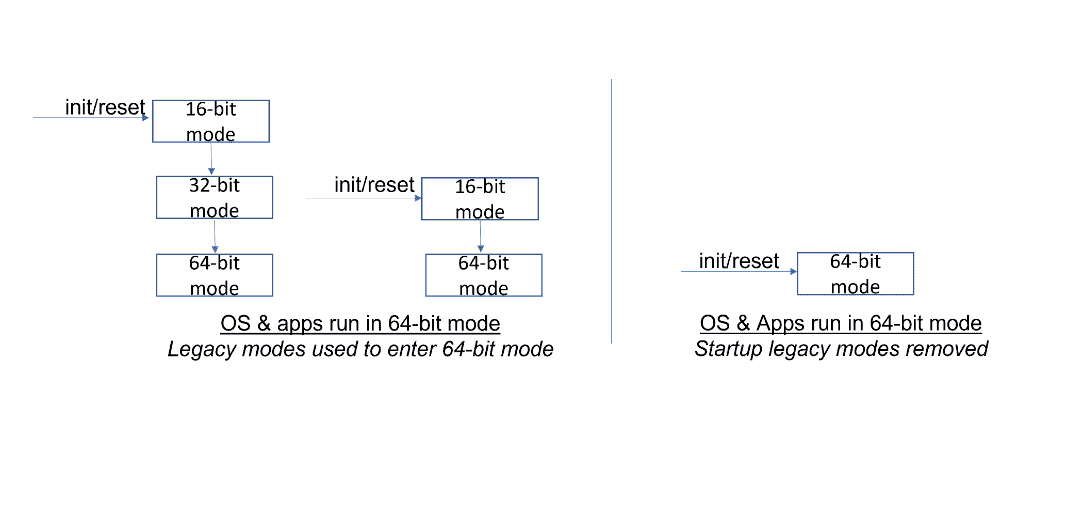Intel is proposing a new architecture standard: X86-S. This would simplify the booting of processors a lot.
Changes like this are rare. Processors can usually handle multiple modes to ensure as much compatibility as possible. For this reason, the existing x86-64 architecture goes through several steps during the boot process. So-called trampoline code transitions the processor from 16-bit real mode to 32-bit protected mode to then operate at 64-bit. For end users, 64-bit mainly means using more than 4 GB of RAM on a device, which can currently be considered inadequate for daily use on a desktop or laptop. For developers, 64-bit offers much more speed, more available memory and increased security capabilities.
Simplification
Specifically, Intel proposes that the new x86-S-ISA (Instruction Set Architecture) will eliminate mostly unused features. The current x86-64 standard has four so-called “rings,” from 0 to 3. The operating system is found on ring 0, the kernel, while modern applications run on ring 3. The reason is that each successive ring offers fewer and fewer privileges relative to the hardware that runs everything. Rings 1 and 2 are not actually used, according to Intel. Legacy applications may be, which means native support for these is disappearing. The same would apply to all 16-bit operating systems, while, for example, the 32-bit variant of Windows 10 would still be operable.
In fact, this move by Intel is not as drastic as it seems. Incompatibility with old drivers can already prevent legacy devices from running at the OS level. So it is rather that Intel has seen the gradual weakening of 16- and 32-bit and now concludes that that support is no longer worth bothering with.
Windows XP was the first Microsoft OS with 64-bit support in 2004, and Windows 11 is only available in 64-bit form. Back in 2008, Intel ended support for early 8086 code. Today, it can only be run by emulating hardware. Intel proposes virtualization to be still able to run outdated software. It says it has made great strides in this regard since 2005, when it began legacy support in this way. In practical terms, this software technique requires a considerable performance advantage over virtualized hardware.
The simplification should also help for I/O because there would be fewer intermediate steps between hardware and software. The so-called string port I/O supported an outdated I/O model driven by the CPU.

